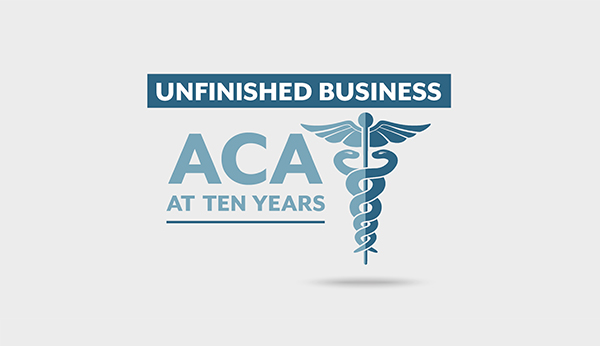
ACA at 10 Years: Consumer Costs
But the cost of health insurance has increased since the ACA took effect, and many of those with coverage struggle to afford care.
Colorado expanded Medicaid to nearly all adults in 2014, doubling the number of people covered by the program. Medicaid requires only a small copayment from enrollees when they receive care and does not include a monthly premium, making it a relatively affordable coverage option.
But most Coloradans are enrolled in private insurance, either through the individual market or through their employer. And the cost of coverage and care for Coloradans with private coverage has actually increased since the ACA took effect.
Health insurance plans on the individual market were nearly 50 percent more expensive in 2019 than in 2014, the first year the ACA’s provisions affecting the individual market took effect. Some individual market shoppers are eligible for subsidies that shield them from price changes, but those without subsidies are highly vulnerable to rising premiums. And the subsidies aren’t always enough to make coverage truly affordable, which could explain why Coloradans between 139 and 400 percent of the federal poverty level (FPL), who are eligible for subsidies, have a higher uninsured rate (9.6 percent) than those lower incomes (6.9 percent), who are eligible for Medicaid, or those with higher incomes (4.1 percent), who are not eligible for subsidies or Medicaid.
Meanwhile, for the 52.7 percent of Coloradans who get insurance through an employer, costs are reaching new heights. The average annual family premium for those enrolled in employer-sponsored insurance has increased from $13,360 in 2009 to $18,314 in 2018. Employers often pay most of the premium costs, but consumers’ costs have also increased dramatically.
These increases are in part a response to a changing health care landscape. Hospitals in Colorado have increased the prices they charge private insurance since 2009. Insurers also lost financial help from the federal government, which in 2017 stopped paying for cost-sharing reductions meant to offer stability for carriers and compensate them for efforts to reduce deductibles, copayments, and coinsurance. Insurers have passed some of the cost of changes on to consumers.
Even With Coverage, Care Is Costly
Apart from insurance premiums, many Coloradans struggle to afford health care. The 2019 Colorado Health Access Survey found that cost kept one in five Coloradans (20.2 percent) from getting care they needed from a doctor or specialist or from filling a prescription in the past year.
While the cost of insurance itself is lower for those with public coverage, one in five of these Coloradans struggles to afford care, despite low or non-existent copayments for services. A low copay may still be unaffordable for some Medicaid enrollees. Others may be trying to access providers or services that are not covered by Medicaid.
Coloradans enrolled in insurance through the individual market are most likely to face cost-related barriers to care. More than one in four (26.6 percent) avoided health care in the past year due to the cost. Policies on the individual market often come with high deductibles. Although the ACA ensured more comprehensive coverage for people with plans from the individual market, it did little to address the affordability of care for this group.
And while those with employer-sponsored insurance have been the most insulated from cost-related barriers to care, they are the largest group and have seen the largest increase —from 13.0 percent in 2013 to 16.6 percent in 2019. This means that nearly half a million Coloradans with insurance through an employer skipped care in 2019 because it was too expensive. The rising costs of insurance and care are having a real effect on Coloradans with all types of health coverage.
Next week, CHI continues to explore the state of health care costs with a look at how the ACA affected costs paid by the government.


